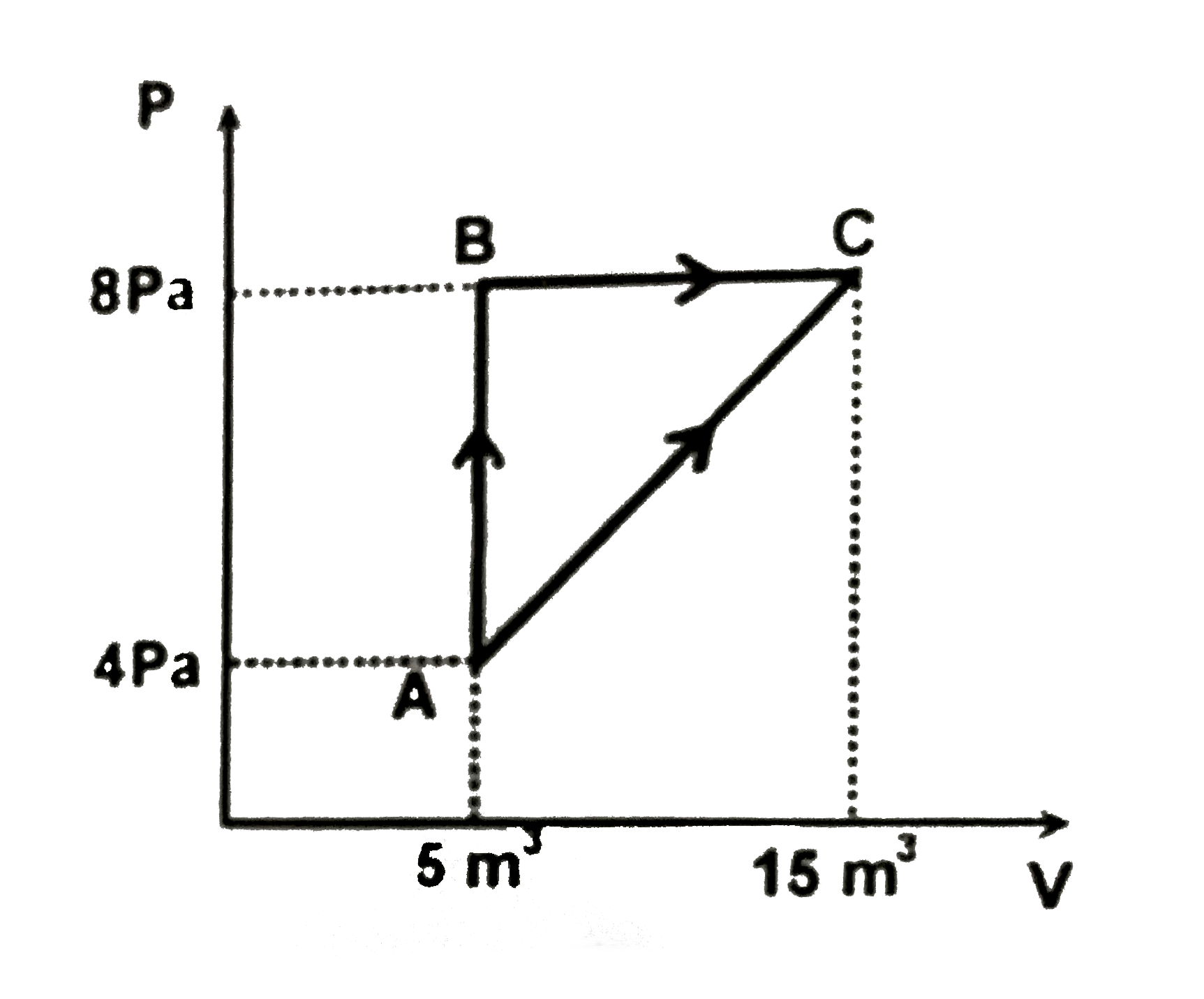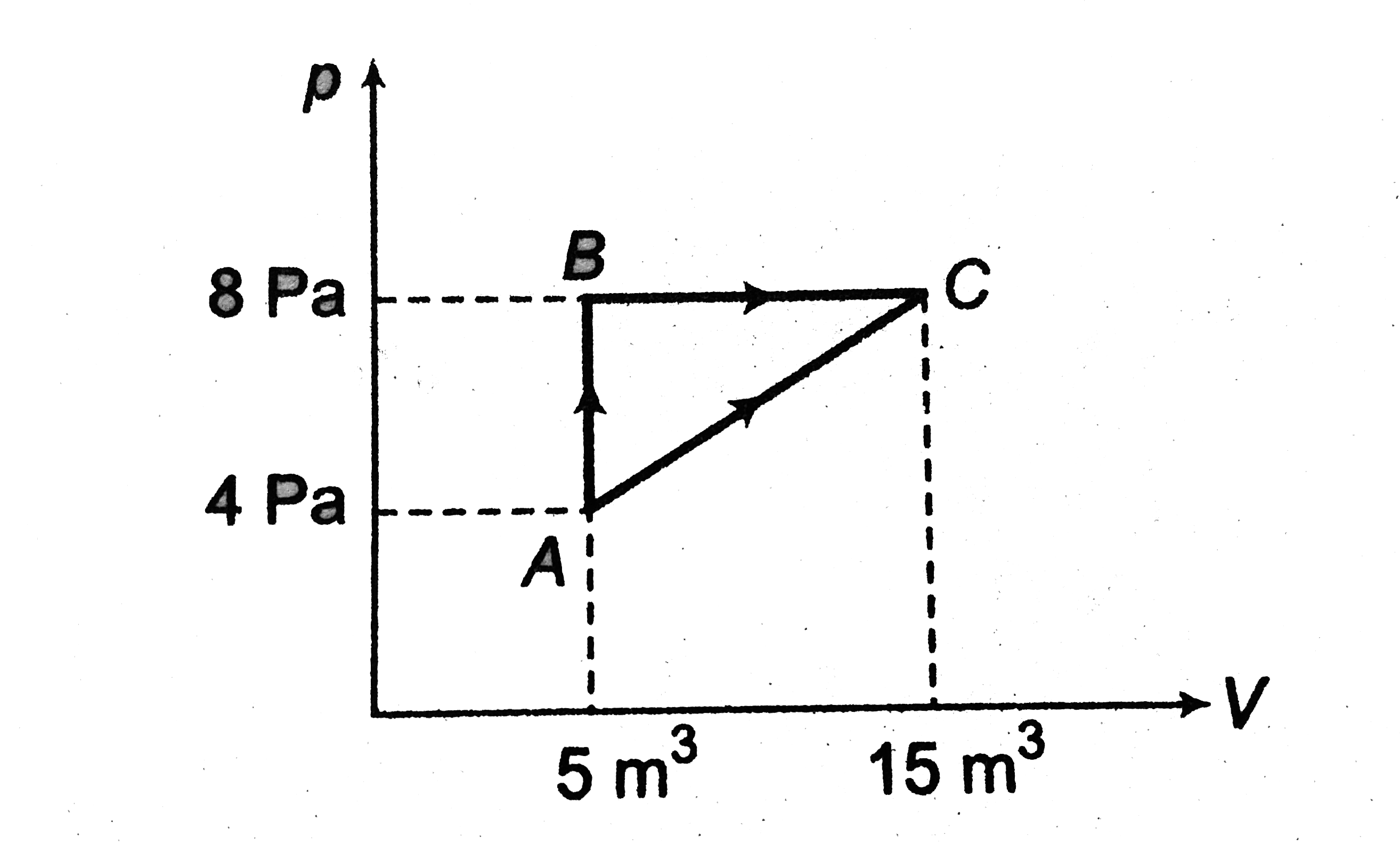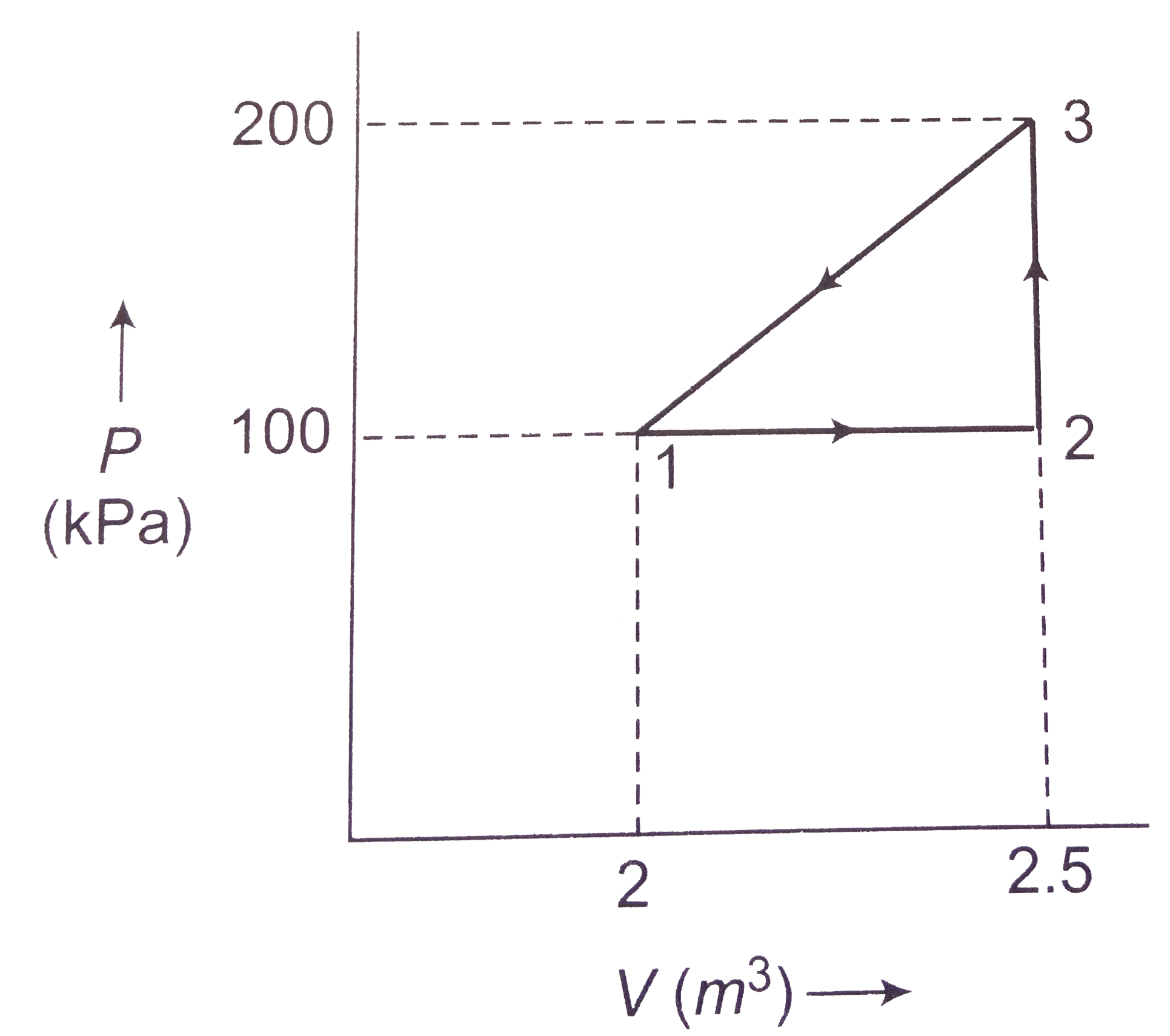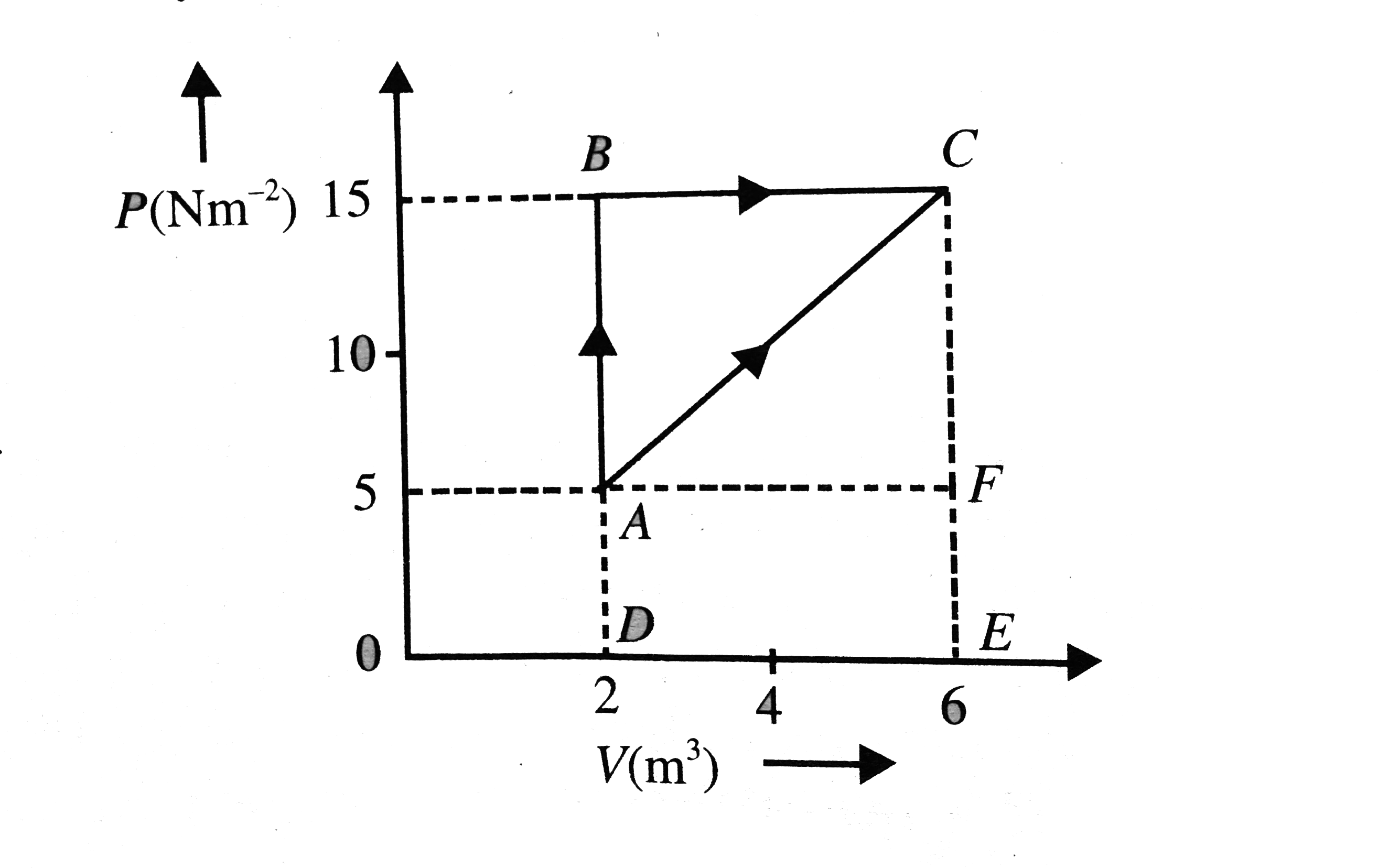In the given figure, an ideal gas changes its state A to stae C by two paths ABC and AC.Find the plane along which work done is the least.
Manimum work is done along path AC, as the area under AC is less compared to the sum of area under AB and BC

Topper's Solved these Questions
Similar Questions
In the given figure, an ideal gas changes it state from A to state C by two paths ABC and AC.
(i) Find the path along which work done is the least.
(ii) The internal energy of the gas at A to 10J and the amount of heat supplied to change its state to C through the path AC is 200J. Calculate the internal energy at C.
(iii) The internal energy of the gas at state B is 30J. Find the amount of heat supplied to the gas to go from A→B.

View SolutionIn the given figure, an ideal gas changes it state from A to state C by two paths ABC and AC.
(i) Find the path along which work done is the least.
(ii) The internal energy of the gas at A to 10J and the amount of heat supplied to change its state to C through the path AC is 200J. Calculate the internal energy at C.
(iii) The internal energy of the gas at state B is 30J. Find the amount of heat supplied to the gas to go from A→B.

View Solution
Knowledge Check
In the given an ideal gas can change its state from A to C by two paths ABC or AC. Then
 AIf the internal energy of gas 'A' is 10J and the amount of heat supplied in path AC is 200J, then the internal energy of gas at 'C' is 150JBIf the internal energyof gas at 'A' is 10J and the amount of heat supplied in path AC is 200J, then the internal energy of gas at 'C'is 75JCIf the internal energy of gas a state B is 20J. Then the amount heat supplied to the gas to go from A to B may be 5 Joule.DIf the internal energy of gas at state B is 20J. Then the amount of heat supplied to the gas to go from A and B must be 10 Joule
AIf the internal energy of gas 'A' is 10J and the amount of heat supplied in path AC is 200J, then the internal energy of gas at 'C' is 150JBIf the internal energyof gas at 'A' is 10J and the amount of heat supplied in path AC is 200J, then the internal energy of gas at 'C'is 75JCIf the internal energy of gas a state B is 20J. Then the amount heat supplied to the gas to go from A to B may be 5 Joule.DIf the internal energy of gas at state B is 20J. Then the amount of heat supplied to the gas to go from A and B must be 10 Joule
In the given figure an ideal gas changes its state from A to state C by two paths ABC and AC.
_E01_269_Q01.png)
(i) Find the path along which work done is the least.
(ii) The internal energy of gas at A is 10J and amount of heat supplied to change its state to C through the path AC is 200J. Calculate the internal energy at C.
(iii) How much is the heat involved in the process ABC and ADC?
View SolutionIn the given figure an ideal gas changes its state from A to state C by two paths ABC and AC.
_E01_269_Q01.png)
(i) Find the path along which work done is the least.
(ii) The internal energy of gas at A and B is 10J and 20 J respectively amount of heat supplied to change its state to C through the path AC is 200J. Calculate the internal energy at C.
(iii) How much is the heat involved in the process ABC and ADC?
View SolutionIn the given graph, an ideal gas changes its state from A to C by two paths ABC and AC.
(a) Find the path along which work done is less.
(b) The internal energy of gas at A is 10J and the amount of heat supplied in path AC is 200J. Calculate the internal energy of gas at C.
(c) The internal energy of gas at state B is 20J. Find the amount of heat supplied to the gas to go from A to B.
View SolutionIn the given figure, an ideal gas changes its state from A to state C by two paths ABC and AC.
_E01_269_Q01.png)
Along which path the work done by the gas is least.
View Solution
In the figure an ideal gas changes is state from state A to state C by two paths ABC and AC.
(a) Find the path along which the work done is least.
(b) The internal energy of the gas at A is 10 J and the amount of heat supplied to change its state to C through the path AC is 200 J. Calculate the internal energy at C.
(c) The internal energy of the gas at state B is 20 J. Fid the amount of the heat supplied to gas to go from A to B.
View SolutionFigure. Shows an ideal gas changing its state A to state C by two different path ABC and AC.
a. Find the path along which the work done is the least.
b. The internal energy of the gas at A is 10J and the amount of heat supplied to change its state to C through the path AC is 200J. Find the internal energy at C.
c. The internal energy of the gas at state B is 20J. Find the amount of heat supplied to the gas to go from state A to state B.

View SolutionIn the given an ideal gas can change its state from A to C by two paths ABC or AC. Then

View Solution
